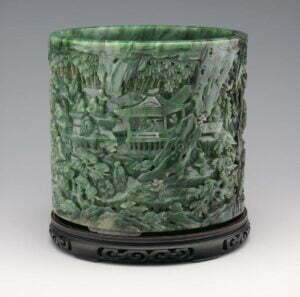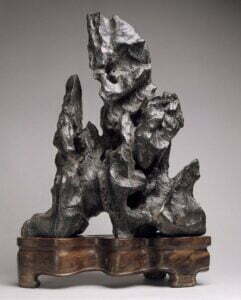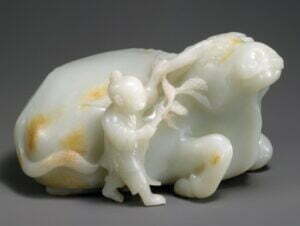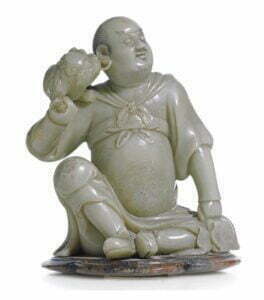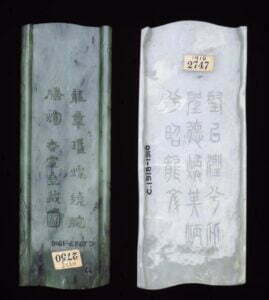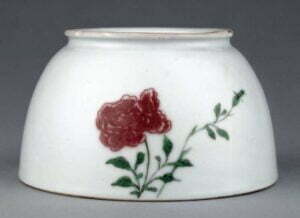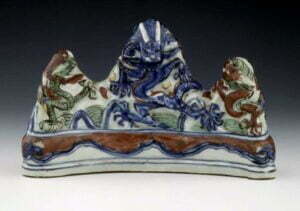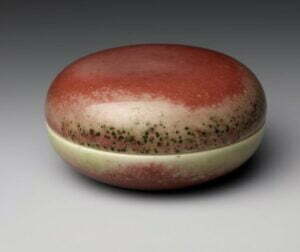Objects for the Scholars Table
The creation of the literati scholar class in China came about by the establishment of civil service examinations for the state bureaucracy in the Tang dynasty (618-906). It was further refined in the Song Dynasty (960-1127) and was eventually abolished in the early 20th century. Scholars were tested on the Confucian classics, agriculture and the arts including painting and calligraphy and those succeeding the highest Jinshi examination, were offered positions within the imperial bureaucracy. This approach legitimised the idea of a state system based on merit and created a common culture to the civil service throughout China.
During the late Ming and Qing Dynasty, a proliferation of objects were made for the scholars table. One of the most common was the brushpot, which was fashioned from a variety of materials including bamboo, wood, lacquer, ivory, jade, glass and porcelain. (Fig ST 1. and ST2.) They could be somewhat plain, relying on the innate qualities of the material, such as those carved from woods such as huanghauli or zitan. Alternatively, these could be intricately carved, often depicted scholars alone or with companions in mountainous landscapes or bamboo groves.
Photograph © British Museum.
Photograph © Metropolitan Museum.
Photograph © Metropolitan Museum, New York.
This idea of escaping to nature and to one’s natural state was a central them of the literati scholar and other objects on his table such as table screens, peaked brush rests and scholars rocks also reflected this. (ST 3.)
Other objects of inspiration, such as handling jades could also be found on the scholars table as this tactile material could be worked into great detail. Studies of human figures or animals were common and these objects were commonly carved from river pebbles and the innate colours and contours of the stone would be used by the carver to their best advantage. (ST 4.) Figures such as Luohan were also carved from soapstone during the late 17th to early 18th century. (ST 5.)
Photograph © Metropolitan Museum, New York.
Photograph © Sotheby’s.
Photograph © Victoria & Albert Museum.
More practical objects were also used by the scholar, such as scroll weights and wrist wrests, the latter being used to prevent the scholar from smudging the ink whilst applying it to paper (ST 6). Brush washers and water pots were also used to clean brushes and dilute paint during painting. A number of ceramic items were also used at the scholar’s desk, such as water pots, brush rests, seal past boxes and incense holders (ST 7, ST 8. and ST 9).
Photograph © British Museum.
Photograph © British Museum.
Photograph © Metropolitan Museum, New York.

